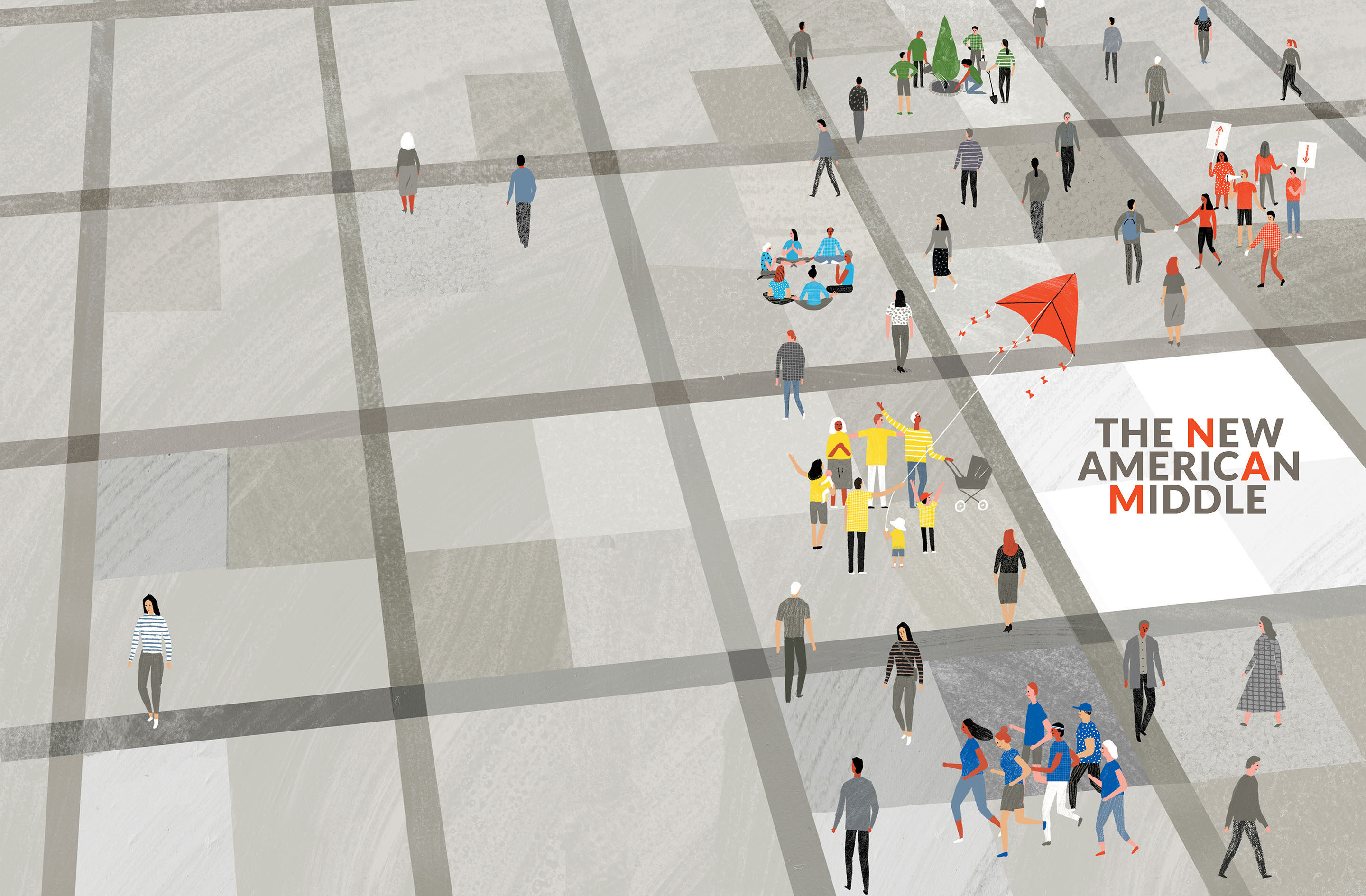
Family
Family is the core of everything. Brands that want to succeed must understand the “Core Four” values, and reflect them back in every aspect of their marketing.

Unlike older conceptions of “middle America” that equated socio-economic class to places like the Midwest or “the Heartland,” this new audience isn’t solely defined by income or geography, or by age, race, or gender. They probably aren’t “bi-coastal,” but some of them live on the coasts. They might work in New York City or Los Angeles or Chicago, but they probably live somewhere else, and probably grew up somewhere else, in a small town or a medium-sized city or a big suburb or all the places in between. They aren’t interested in haute couture, and their purchases aren’t totally driven by what’s on sale. They aren’t obsessed by the latest fads, but they are deeply proud of their personal sense of style.
If any of this sounds familiar, that’s because it describes the many of the 50% of American consumers who live outside the country’s five largest metropolitan areas. This is a part of the country that was, historically, built on industry, manufacturing, and farming—in other words, a part of the country that produced tangible things. And while the New American Middle has largely turned their backs on consumerism, they have affinity for things that are the product of hard work and craftsmanship, and brands that reflect these values back to them.

For generations, brands have relied on big ad agencies to spend big media dollars to reach this audience. At BMDG, we believe this top-down approach is no longer effective, especially considering these seismic shifts in the marketing landscape:
What we used to think of as “the audience” now consists of many smaller audiences, each with its own wants and needs.
[ read audience fragmentation article ]
The guiding stars of print, billboards, and television have exploded into an infinite universe of digital and social media platforms.
[ read media proliferation article ]
Most Americans are exposed to between 4,000 and 10,000 ads per day. In order for brands to break through all that noise, they need to craft relevant content, on the right channel, with the right message, to the right audience, at the right time.
[ read content saturation article ]
The ability to integrate and connect data sources has changed the way we do business. We have the ability to access more data than ever before, in real-time, but all that data can be paralyzing for brands that don’t know how to effectively utilize it.
[ read big data article ]
Every day brings news of the latest hack. This will soon lead to a change in privacy laws, which will mean that brands will need to harness, leverage, and curate their own primary data for their marketing.
Consumers used to be much more loyal to brands they trusted. That is less and less true with each passing year. Communicating the right values to consumers is therefore more important than ever.
[ read brand loyalty article ]
To make matters even more complicated, agencies from big metropolitan areas often see the rest of the country through a distorted and patronizing lens—if you view an audience as living in “flyover country,” it’s no wonder these agencies can’t convert for brands like they used to.
Now, the most effective way to reach the New American Middle is more local, more grass roots marketing, and it takes an agency that lives and works in the heart of the New American Middle to truly understand this audience.
Read more about the changing landscape of marketing.
Learn More
Through our own research, and our work with brands such as Arhaus, Pyrex, Sherwin-Williams, Vera Bradley, and many others that market to the New American Middle, we’ve discovered an essential truth about this valuable audience. The New American Middle is motivated primarily by four core values:
These values do something unique in our increasingly fragmented and fractured society—they unify.
While the New American Middle Audience is positively motivated by four core values, they also have a finely tuned sense for the type of brands, and brand expressions, that are negatively motivating:
Big institutions. Big corporations. Big brands. Big cities. This is the opposite of the personal, face-to-face interactions that drive the values core to the New American Middle.
This audience can smell a sales pitch from a mile away, and there is nothing they dislike more than the feeling of being sold something.
The New American Middle audience does not want to be told what to like, what to wear, how to decorate their homes, and where to shop. This audience especially doesn’t like having their tastes dictated by brands that clearly don’t understand their day-to-day lives.
Unlike many media stereotypes, the New American Middle is a very welcoming and inclusive group of people. However, this audience is sensitive to the feeling that greater inclusion sometimes means their lives, and their points of view, are excluded in the process.
When thinking about marketing around values, it’s important to remember that the New American Middle also wants to look good; they want to feel proud about what they wear, what they furnish their homes with, and which brands they recommend to their friends, family, and neighbors.
The proliferation of style blogs, design websites, and DIY television shows has created an audience that is much more knowledgeable and style-conscious than any traditional notion of “the middle.” However, these audiences do not respond to imagery of lives and homes that don’t look like theirs, which is how brands associated with style and design are often marketed.
Your first step should be to call BMDG. Many prominent advertising and marketing agencies exist in urban hubs while their clients’ customers live in the spaces in between, the spaces that are home to the New American Middle. This creates a cultural disconnect. Bridging that disconnect for our clients is how we help them win.
We work diligently to give dimension and texture to these audiences in ways that help brands build lasting and meaningful relationships. While idolatry of the unattainable has worked for many brands for many years, we know the New American Middle responds best to aspirational yet authentic creative that reflects the best versions of their real lives.
When you begin working with BMDG, we will put your brand through our tried-and-true five-step New American Middle Brand Value ID Positioning framework:
The process works. If you don’t believe us, take a look at our client list, and some of our past work. These are brands you will recognize, and images you will remember. They represent all the work we’ve done to help enrich, in ways large and small, the living rooms, the kitchens, and the closets of millions of American consumers.
If you’re ready to hear more about the New American Middle, read our expanded article.